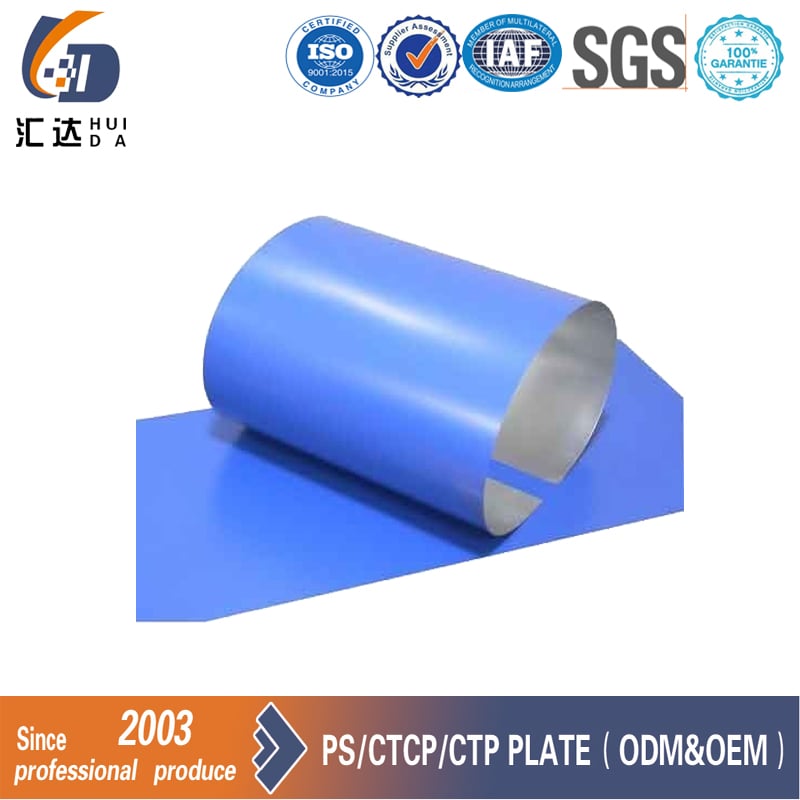
Line reproduction, like dot reproduction, is the specific embodiment of plate resolution testing in printing. Because the line screening algorithm and the dot screening algorithm are different, the dots highlight the optical characteristics of a specific area, while the lines highlight the smoothness of the edges. Therefore, although the resolution is also tested, it is also necessary to test the line reproduction. The reproducibility of lines usually includes the following two aspects:
- Reproduction of extremely fine lines
The reproduction of extremely fine lines is related to the resolution of the printing plate. The resolution is determined by the control of the sand mesh, coating and other processes of the printing plate during production. Its principle and dot reproduction have been described in detail. For the reproduction of lines, not only the size of the sand mesh is concerned, but more importantly, the uniformity of the sand mesh, because only the evenly distributed sand mesh supports the smooth edges of the lines. Of course, the uniformity of coating is also a very important aspect.
To detect the reproduction of extremely fine lines on the printing plate, straight lines and curves of different widths can be printed on the CTP printing plate, and the size of the straight and curved lines that can be reproduced can be observed with the naked eye, and the smoothness of the line edges can be observed with the help of a magnifying glass.
- Size of Yin and Yang lines
Due to the existence of light penetration, the visual width of the negative and positive lines on the printing plate will change to a certain extent. The thickness of the coating is also a key factor affecting this phenomenon. The comparison of the thickness of the Yin line and the Yang line can reflect the optical thickening of the line due to optical phenomena. This is also a very important aspect of line reproduction. During plate making, adjacent negative and positive lines can be printed on the printing plate to compare the changes in the lines.
In addition to line reproduction, there are also the following requirements for CTP plates. Such as bottom gray, sensitivity, size specifications, coating uniformity, printing durability, etc.
Bottom ash is caused by improper processing of the aluminum base during production, especially in the rolling and rewinding parts of aluminum base production. Usually, the bottom dust can be removed by reasonably controlling the development and exposure time, but the bottom dust should be removed without affecting the quality of the image and text. If the bottom dust has to be removed with the premise of losing image quality, it means that the plate does not meet the requirements. Require.
Sensitivity refers to the CTP plate’s requirements for exposure to light source energy. This indicator is especially important for thermal CTP plates, because the laser light source of the computer-to-plate setting machine is relatively expensive and difficult to replace, so it is necessary to extend the service life of the light source as much as possible. Using a plate with higher sensitivity requires the laser to use higher power when working, which accelerates the aging of the laser. At the same time, because the energy requirements for plate exposure are too high, the laser is more likely to attenuate, further shortening its life. Therefore, the lower the sensitivity, the better.
There are no special requirements for the size specifications and coating uniformity of CTP plates. You can refer to the requirements related to PS plates in national standards for appropriate adjustments and testing. The printing durability usually varies according to the type of plate. Generally speaking, the denser the grit, the higher the printing durability. The printing operation also has a great impact on the printing durability, so it should be determined according to the actual situation.
Some of the above indicators are items that are of great concern in printing and can be relatively easily measured. They are more instructive to the printing process. Only by controlling the above aspects in the selection of plate materials can the printing quality be guaranteed.
Huida Print-All Technology company is an advanced and professional manufacturer of producing printing plates, mainly sales CTP, CTCP, and PS plates as well as offering ODM/OEMs, especially for the offset. For more information, please click the official website link here: https://www.huidaoffsetplate.com/.

